09:00 - River Gurara Popa & River Gurara Proa (Saída Dupla)
August 02
Finden Sie die ideale Taucherlebnis
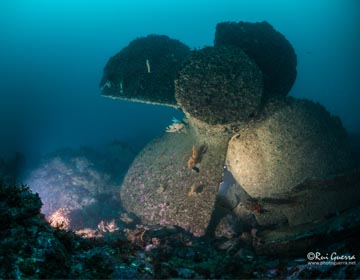
August 02
Von Arrábida bis Cape Espichel verbindet
sich das Grün perfekt mit dem Blau des Meeres.
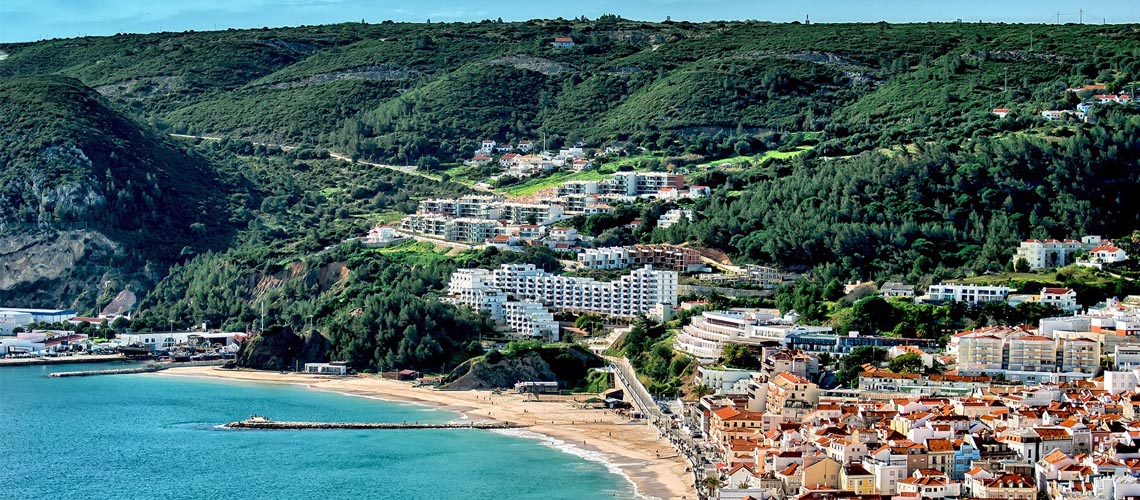
Mit mehr als die Hälfte des Territoriums des geschützten Bereichs, ist die Gemeinde von Sesimbra eine erstklassige Lage für diejenigen, die Natur genießen möchten.
In Arrábida, Cape Espichel, gehen die grünen Berge nahtlos in das Blau des Meeres über und bilden eine einzigartige Landschaft.
Die litorale Tendenz Sesimbras spielte für die Provinz schon immer eine unentbehrliche Rolle. Früher die Fischerei, die viele Generationen lang den Kern der Gemeinschaft darstellte, später die Feizeittrends wie Tauchen, sie schaffen ein beliebtes Reiseziel und minimieren Sesimbras Abhängigkeit von der Fischerei.
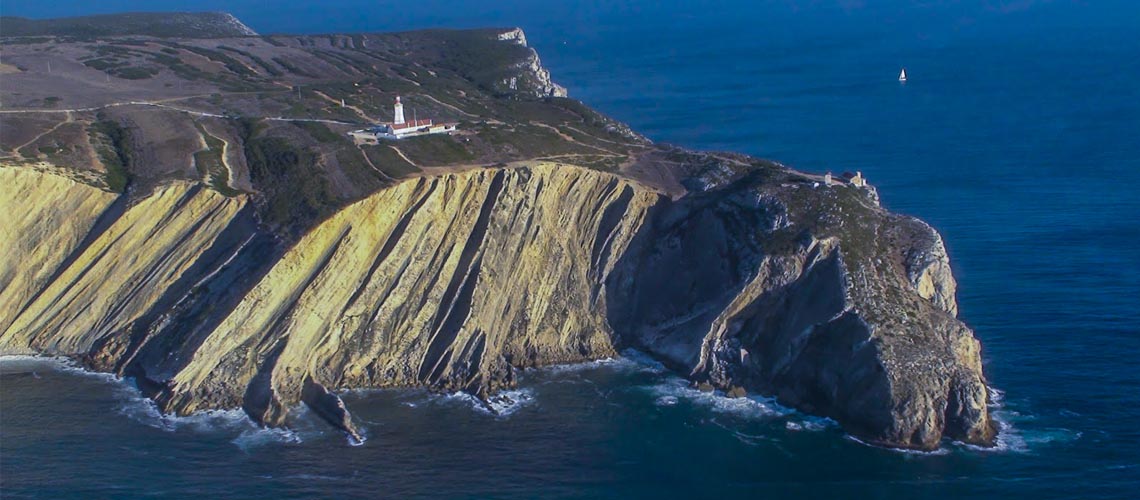
Sesimbra gehört zum Kreis von Setúbal, der Region Lissabon (NUTS II). Setúbal Peninsula (NUT III) umfasst drei Ortschaften: Santiago Castillo und Quinta do Conde und somit eine Fläche von 195,7 km².
2005 lebten insgesamt 42.076 Einwohner in der Gemeinde Sesimbras.
Im Norden grenzen die Gemeinden Almada und Seixal und im Osten die Provinz Setúbal an das idyllische Städtchen Sesimbra an. Der Westen, sowie Süden wird durch die schwappen den Atlantischen Ozean abgegrenzt.
In den Sommer Monaten weist Seisimbra ein mediterranes Klima mit einer Trockenperiode von etwa 80-100 Tagen und einer Durchschnittstemperatur zwischen 23 ° C und 29 ° C auf. Im Winter sind diese milder. Dieses Klima liegt den Bergen von Arrábida zu Grunde.
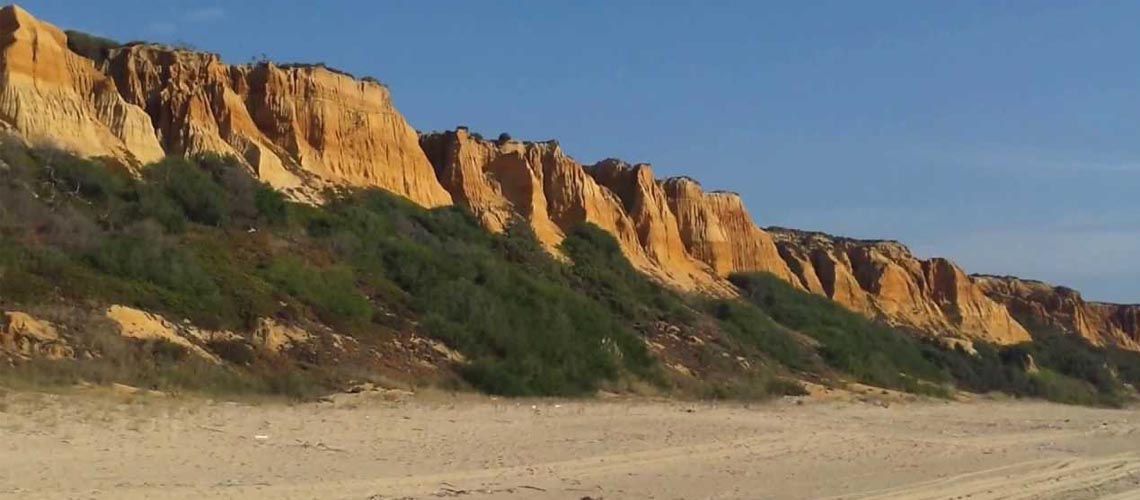
Sehenswert in Sesimbra ist die «Serra dos Pinheirinhos». In ihr befindet sich auf einer Höhe von 501 Metern liegende Kloster der Kapuziner Mönche.
Dieses Naturschutzgebiets, geprägt durch uralte fossile Klippen der Costa da Caparica, erstreckt sich fast bis zur Lagune von Albufeira. Die durch tausende von Jahren veränderte Formation der Klippen machen diesen Ort zu einem der wunderbarsten Plätze unserem Landes Portugal. Vorallem im Sommer leidet die Tierwelt stark durch vorherrschende anthropogene Einflüsse. Dieser menschliche Eingriff in das Ökosystem wird jedoch im Rest des Jahres entgegen gewirkt und und somit ausgeglichen.
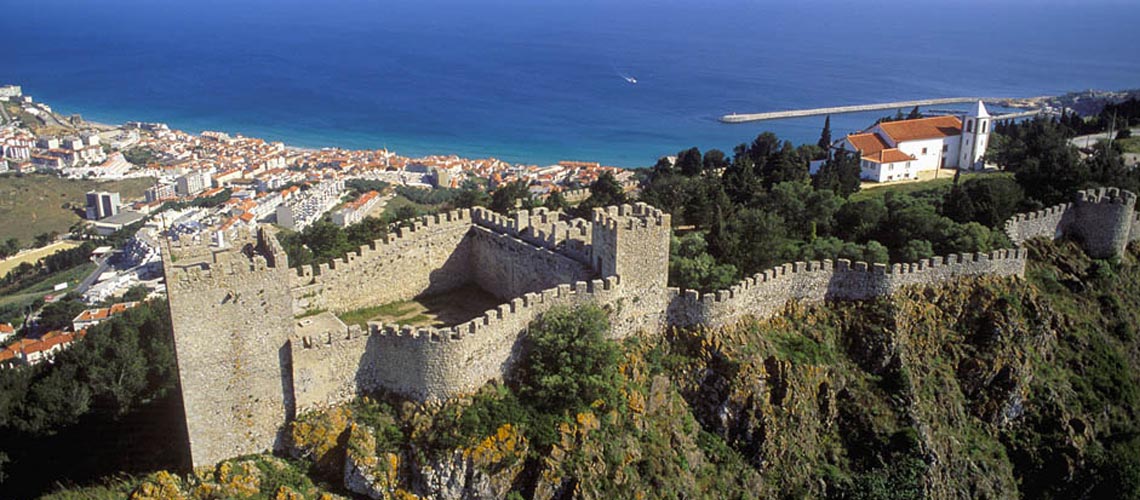
Viele Dinosaurier - Knochen wurden bereits in Sesimbra gefunden, vorallem in der Nähe der Espichel Cape Klippen.
Die Länder dieser Gemeinde wurden in den späten 12. Jahrhundert, von dem portugisischen König D. Sanchos erobert.
Im Jahr 1323 wurde Sesimbra unter dem damaligen König Dionisio I de Portugal zu einem national wichtigen Fischerhafen.
Im 18. Jahrhundert begann Sesimbra zu wachsen, Hotels wurden erbaut und Tourismustouren, sowie religiöse Touren standen an der Tagesordnung. Somit gewann der Begriff des Tourismus in der kleinen Provinz eine bedeutende Rolle zu spielen.
Bewundernswerte architektonische Meisterwerke wie die Burgen Sesimbras und Santiagos oder viele Kirchen.
Ein weiteres bemerkenswertes architecktonisches Monument ist Fort Santiago, in dessen Hof man noch ein großes hölzernes Gemälde, des siebzehnten Jahrhunderts steht. Es zeigt den mit einem Schwert ausgerüsteten St. Jago auf seinem Pferd, auftürmend über einer Gruppe Spanier.
Ein weiteres historisches Monument ist die Kirche Santa Maria do Castelo, welche 1160 erbaut wurde. Sie wurde im 18. Jahrhundert renoviert. Sie ist ein perfektes Beispiel portugiesischer Architektur. Neben ihr befindet sich in Sesimbra auch die Kirche -Nossa Senhora del Cabo-, auf Grund ihrer speziellen trichterförmigen Kammerkonstruktion. Beide Kirchen sind per Torbogen miteinander verbunden. Die Bewohner der Provinz Sesimbra werden heute noch von den beiden Glockentürmen geweckt, bzw. zum Gebet gerufen.

The Arrábida protected area has become the habitat for a wide variety of fauna species, including about 650 invertebrates and 200 vertebrates that include 12 amphibians, 17 reptiles, 34 mammals and 136 birds.
There are birds of prey that nest on the cliffs as the Bonelli's eagle Hieraaetus fasciatus, the buteo Buteo buteo and the common kestrel Falco tinnunculus. Cabo Espichel is part of the preferred routes for migrating birds.
Bats use the cliffs caves as shelter for reproduction and hibernation. Some bats species are in extinction danger as the bat of plush Miniopterus scheibersii.
It is also important to mentioning the presence of the fox Vulpes vulpes, the weasel Mustela nivalis and the genet Genetta genetta.
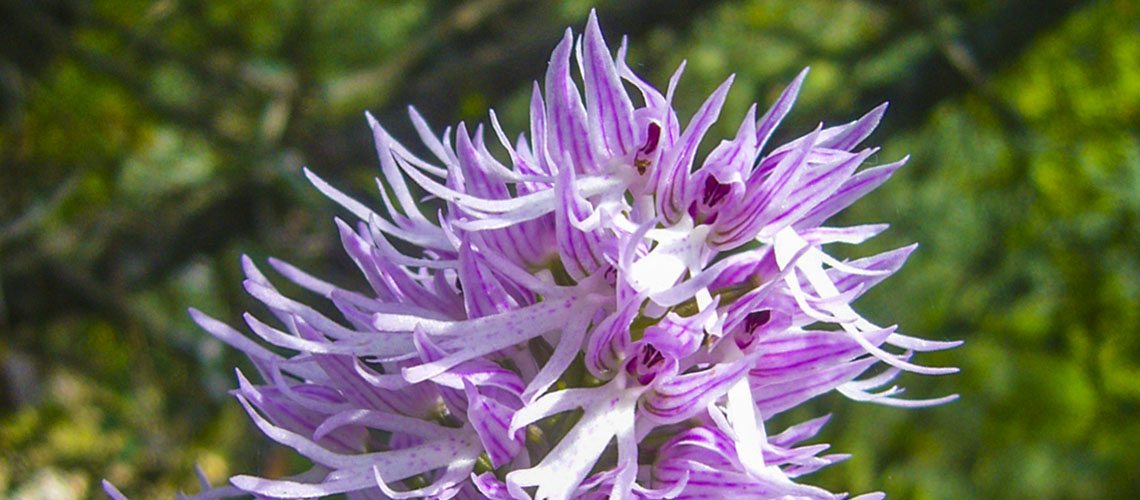
The privileged geographic location associated with the geological and climatic conditions in this hillside allowed the development of a vegetation with unique characteristics which represent an important role in national and international conservation.
Until now 1450 species and subspecies of plants have been found in the Arrábida natural park, most of them with Mediterranean distribution, but also Macaronesian and some Eurosiberian species.
Here we highlight the oak Quercus faginea and the gorse Ulex densus, an endemism of the Portuguese west-central limestone, which is very common on the Cape Espichel that makes an intense yellow landscape in April.
The high botanical value is due to the presence of unique floristic associations with species such as rosemary, thyme, heather, fennel, myrtle, as well as the extraordinary beauty of most flowers: the yellow-flowered daffodil, the orchid, the rosebush, some of them essential for beekeeping.

Sesimbra is located in a huge bay facing south, the weather being predominantly north, it is very sheltered throughout the year allowing unique conditions for diving.
The water temperature varies between 14ºC in the winter and 20ºC in the summer, so it is ideal to use a semi-dry suit in the summer and dry suit in the winter.The visibility varies between 5 meters and 15 meters, however, all dives have a great amount of life due to more than 1400 species in the area.
Dives are done in semi-rigid boats and the trips are usually short and it's usual to return to the boarding pier after each dive.
Customed for the efficiency and comfort of divers, we have male and female spas with a capacity for 60 people, hot water shower with towel, two classrooms, technical zone with all equipment to rent, shop with the best brands and a place where you can relax before and after dives. We are an Aqualung center with about 50 equipments available for use by our customers.

In our center you will find a shop specialized in diving equipment, two classrooms, male and female spas, filling station, space to wash and dry your equipment as well as a terrace area where you can relax after your dive.
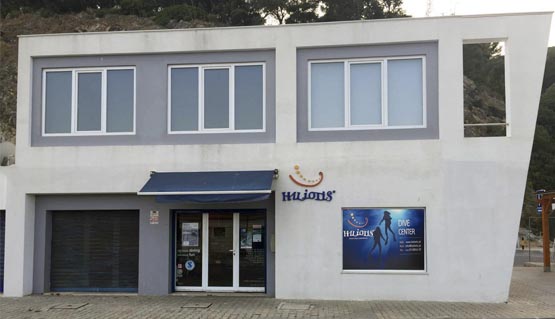





Know the characteristics.
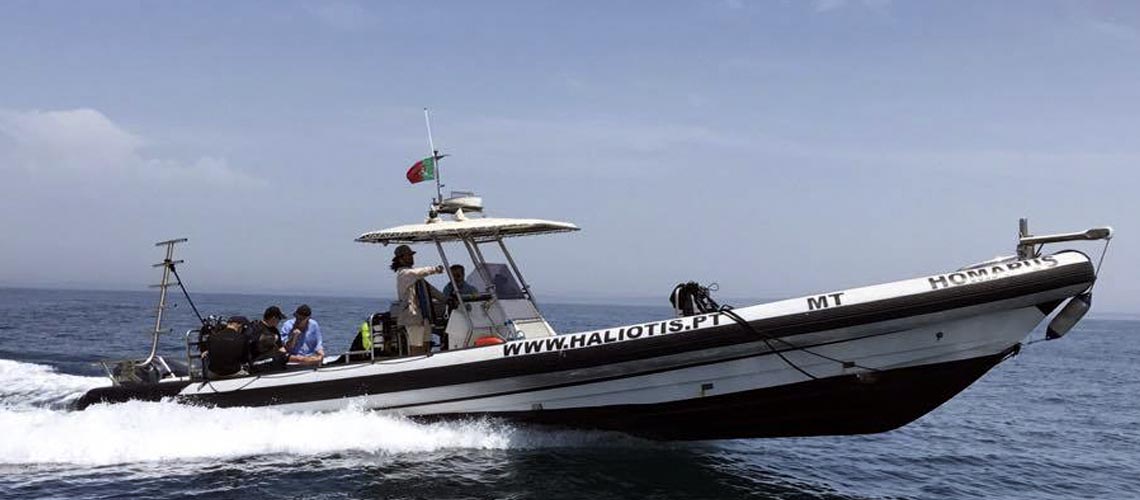

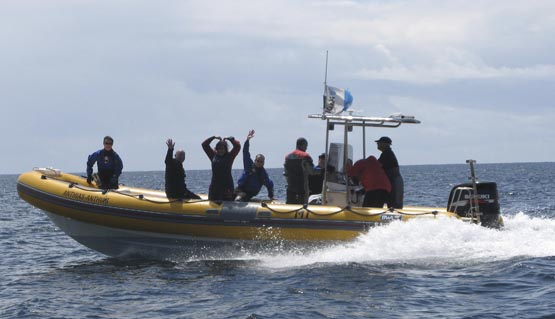
Know our roots.
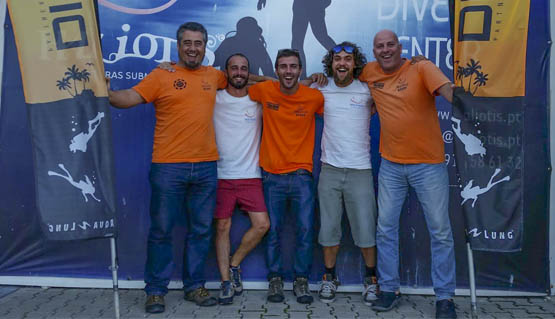

Treffen Sie die Mitglieder unseres Teams, die täglich arbeiten, um die besten Unterwassererlebnisse zu bieten.

Paulo Freitas
Base Leader paulo.freitas@haliotis.pt
Hillary Santamaria
Dive Instructor hillary.santamaria@haliotis.pt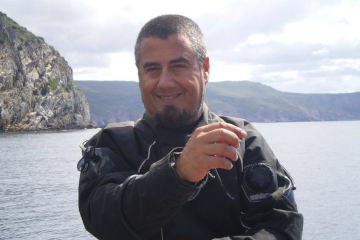
Paulo Guerreiro
Dive Instructor paulo.guerreiro@haliotis.pt
Tel. +351 910 586 132
Tel. +351 218 006 356
Fax. +351 210 996 386
e-mail: sesimbra@haliotis.pt
Licenced by Instituto de Desporto de Portugal

All insurance by Mútua dos Pescadores

Operator Maritimo Turistico with licence Nº17 by Capitania do Porto de Peniche

Tourism licence 9/2009

Licened by Instituto da conservação da Natureza

Company registered in RNAAT with activities recognized as Nature Tourism
